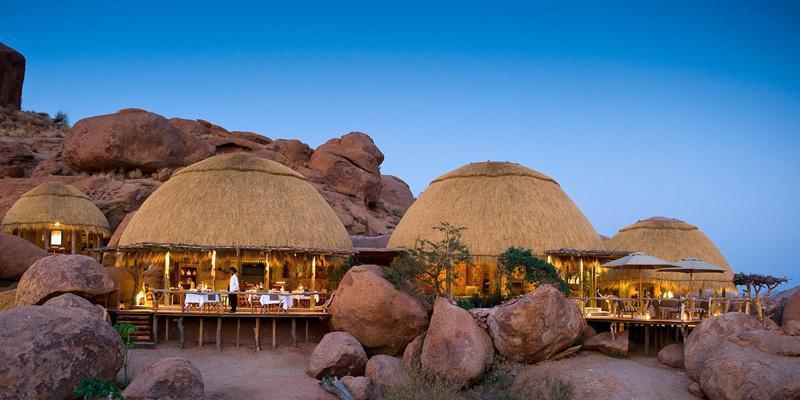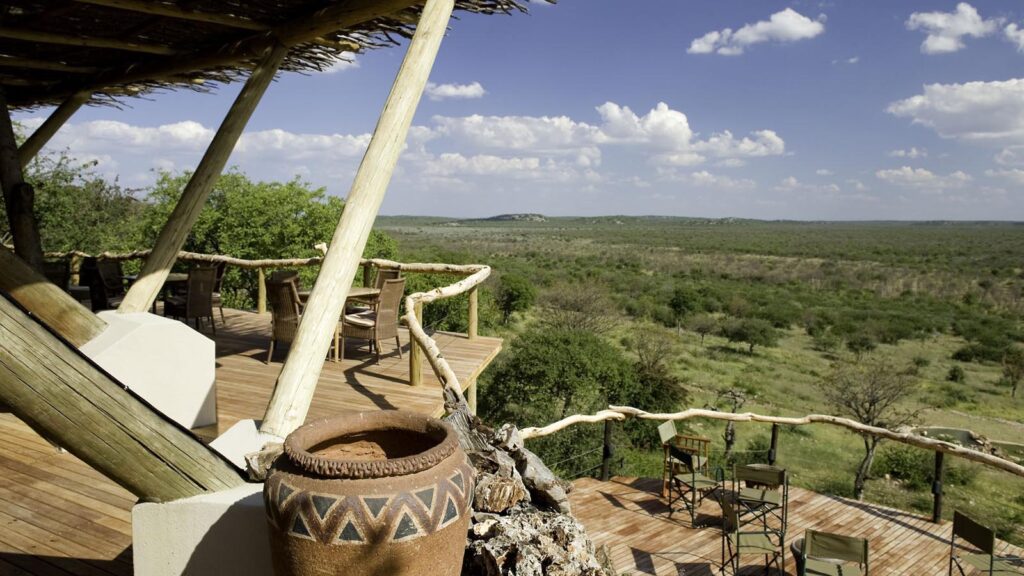Tsau //Khaeb (Sperrgebiet) National Park
Tsau //Khaeb (Sperrgebiet) National Park: Stretching across Namibia’s remote south-western coastline, the park now known as Tsau//Khaeb (formerly the Sperrgebiet, or “forbidden area”) carries a name that translates from the local Khoekhoegowab language roughly as “deep sandy soils” — a fitting description for a place of sweeping desert, ancient dunes, and hidden life.
3-Day Lüderitz & Kolmanskop Desert
4-Day Tsau //Khaeb Diamond Desert Safari
5-Day Lüderitz & Tsau //Khaeb Adventure
7-Day Southern Namibia & Tsau
8-Day Namib Desert & Sperrgebiet
10-Day Namibian Diamond Route
12-Day Southern Namibia
14-Day Fly-In Desert & Coast Expedition
Tsau //Khaeb (Sperrgebiet) National Park
Tsau //Khaeb (Sperrgebiet) National Park lodges
Tsau //Khaeb (Sperrgebiet) National Park monthly guide
General Climate
January ushers in the Namibian summer with warm to hot daytime temperatures ranging between 25°C and 33°C inland, though the coastal areas near Lüderitz remain cooler due to Atlantic breezes. Early mornings and evenings are often blanketed in fog, feeding moisture to the desert plants that depend on condensation rather than rain. The air is dry inland but humid near the coast, and days are long with brilliant sunlight.
This month offers a vivid, high-contrast landscape ideal for photography. The dunes glow in shades of amber and red, the Atlantic gleams silver, and the ghost towns of Kolmanskop appear surreal under the bright summer light. The atmosphere feels energetic — alive with colour and warmth. For travellers seeking dramatic desert imagery or quiet coastal walks before the midday heat, January is both bold and beautiful.
General Climate
February continues the summer pattern but introduces denser fog and slightly higher humidity, especially in coastal zones. Temperatures hover between 24°C and 30°C, while inland areas may rise higher. The mornings often begin with thick mist that slowly dissipates into bright blue skies.
February’s fog creates an ethereal, dreamlike mood. The light is softer, giving the dunes and ghost towns a painterly tone. It’s a wonderful time for atmospheric photography, particularly near Bogenfels Arch and the coastline, where mist, sand, and sea merge in haunting beauty. Desert wildlife — small mammals and reptiles — becomes more active as moisture levels rise, offering subtle but meaningful encounters for patient observers.
General Climate
March marks a transition from the intense heat of summer to more moderate temperatures. Daytime averages range between 20°C and 28°C, with coastal breezes offering comfort. Winds begin to calm, and visibility improves as summer haze fades. Nights grow cooler but remain pleasant.
March is a month of balance and tranquillity in Tsau//Khaeb. It’s ideal for travellers seeking milder weather for exploration and photography. The desert’s colours deepen, the air feels cleaner, and sunsets over the dunes are breathtaking. Roads remain firm and dry, and fog less frequent, allowing longer days for 4×4 excursions into the park’s interior.
General Climate
April brings the onset of autumn in Namibia, marked by calmer winds and comfortable temperatures between 18°C and 28°C. The heat softens, humidity drops, and skies are crystal clear. Early mornings can be cool, while afternoons remain warm enough for exploration.
April is one of the most comfortable and visually rewarding months to visit. The absence of strong wind makes it perfect for photography and guided drives. The light quality is exceptional, casting long golden shadows across the dunes and rocky hills. It’s a month when travellers can fully appreciate both the park’s stillness and its subtle palette of desert hues.
General Climate
May signals the start of Namibia’s winter, with temperatures cooling to 16°C–25°C during the day and dropping below 10°C at night. Winds are gentle, skies are cloudless, and fog along the coast continues to feed the unique desert flora.
May’s crisp air and golden light make it ideal for travellers who prefer cooler conditions. It’s an excellent time for long desert drives and panoramic photography, as visibility is outstanding. The succulents are at their healthiest, thriving on fog moisture, and the stark clarity of the landscape creates breathtaking images at sunrise and sunset.
General Climate
June falls in the heart of the cool, dry winter season. Morning temperatures can be chilly, dropping to 8°C or lower, while afternoons reach 22°C–26°C. Coastal fog is still frequent but light, and the winds that dominate summer are mostly absent. The air is remarkably clear, and the desert sky turns a deep cobalt blue.
This is one of the best months to experience Tsau//Khaeb’s quiet majesty. The low sun angle enhances the desert’s sculpted contours, and the lack of wind creates perfect conditions for photography. Night skies are crystal-clear, making stargazing unforgettable. Travellers who love solitude and serenity will find June a poetic time to explore this untamed landscape.
General Climate
July continues the cool, dry conditions of winter. Days are mild, averaging 20°C–25°C, and nights can be quite cold, sometimes dipping near 5°C. Fog rolls inland from the coast in the mornings, retreating by midday to reveal a landscape crisp and golden.
July offers some of the most comfortable travel conditions in Namibia. The stillness of the desert at this time is extraordinary, and the cool air allows for extended exploration. This is also a great month for travellers who appreciate solitude — visitor numbers are low, and the ghost towns feel truly timeless under the winter sun.
General Climate
August is Namibia’s driest and windiest month in some regions, but in Tsau//Khaeb the coastal influence softens the extremes. Temperatures range between 18°C and 26°C, with chilly mornings and evenings. Winds pick up intermittently but bring little discomfort due to the moderate climate.
August is ideal for those who love a sense of adventure and wide-open horizons. The dunes appear sharper under the crisp winter light, and the dramatic shadows create breathtaking visuals. Clear skies dominate, making it perfect for travellers interested in night photography and celestial observation. It’s also a time when desert wildlife is easiest to spot as animals cluster around scarce water sources.
General Climate
September marks the transition from winter to spring, bringing gradually warmer days and milder nights. Average temperatures rise to 24°C–28°C, with clear mornings and gentle afternoon winds. The fog remains, though less dense, providing life-sustaining moisture to the succulents and lichen fields.
September is a photographer’s dream. The desert begins to stir again after winter’s quiet, and early signs of plant activity appear. This is an excellent month for travellers who wish to explore both the coast and interior without extreme heat or cold. The balance of light, temperature, and calm weather makes September one of the most inviting months of the year.
General Climate
October brings warmer and drier conditions, marking the start of the pre-summer period. Daytime temperatures rise to 30°C inland, though the coast remains cooler. Winds can increase slightly, particularly in the afternoons, but mornings and evenings remain tranquil and photogenic.
October offers striking contrasts — bright light, long days, and intense colours. The desert’s reds and golds come alive again, and it’s a prime time for capturing the vastness of Tsau//Khaeb in all its raw glory. Travellers looking for a balance of adventure and comfort will find this month perfect for both exploration and relaxation.
General Climate
November reintroduces the early heat of summer, with daytime highs between 28°C and 34°C inland. Coastal fogs intensify once again, feeding the unique desert ecosystems. Winds may rise intermittently, especially in the afternoons, but mornings remain still and serene.
This is the beginning of the dramatic light season, when the contrast between fog and sunlight transforms the dunes into luminous canvases. The coastal belt feels otherworldly, and the inland areas shimmer under a golden haze. For travellers drawn to atmospheric beauty and striking photography, November’s interplay of mist and heat creates extraordinary conditions.
General Climate
December is the height of summer in Namibia, with daytime temperatures averaging 30°C–35°C, though the coastal fog moderates heat significantly near Lüderitz. Days are long and bright, while evenings bring cool ocean breezes that soften the warmth.
December offers a vibrant, cinematic version of the desert. The air is filled with movement — shifting sands, seabird calls, and soft winds off the Atlantic. It’s an excellent month for travellers seeking vivid colour, long daylight hours, and solitude. While some days can be hot inland, the evenings are magical, with sunsets that set the desert ablaze in hues of fire and rose gold.
Why choose us
Grandeur
Experience the grandeur of Africa with WildHorn Africa, where every safari is designed to showcase the continent’s breathtaking landscapes and majestic wildlife.
24/7 support
Enjoy peace of mind with 24/7 support from WildHorn Africa, ensuring expert assistance before, during, and after your safari adventure.
Safety
Your safety is our top priority at WildHorn Africa, with expertly guided safaris and trusted partners ensuring a secure and worry-free adventure.
Price-quality ratio
WildHorn Africa offers exceptional price-quality ratio, delivering top-tier safari experiences at competitive rates without compromising on comfort.
Featured Headlines




 WildHorn Africa – Authentic and unforgettable tours across Africa, guided by local experts who know the land, wildlife, and culture best.
WildHorn Africa – Authentic and unforgettable tours across Africa, guided by local experts who know the land, wildlife, and culture best.


